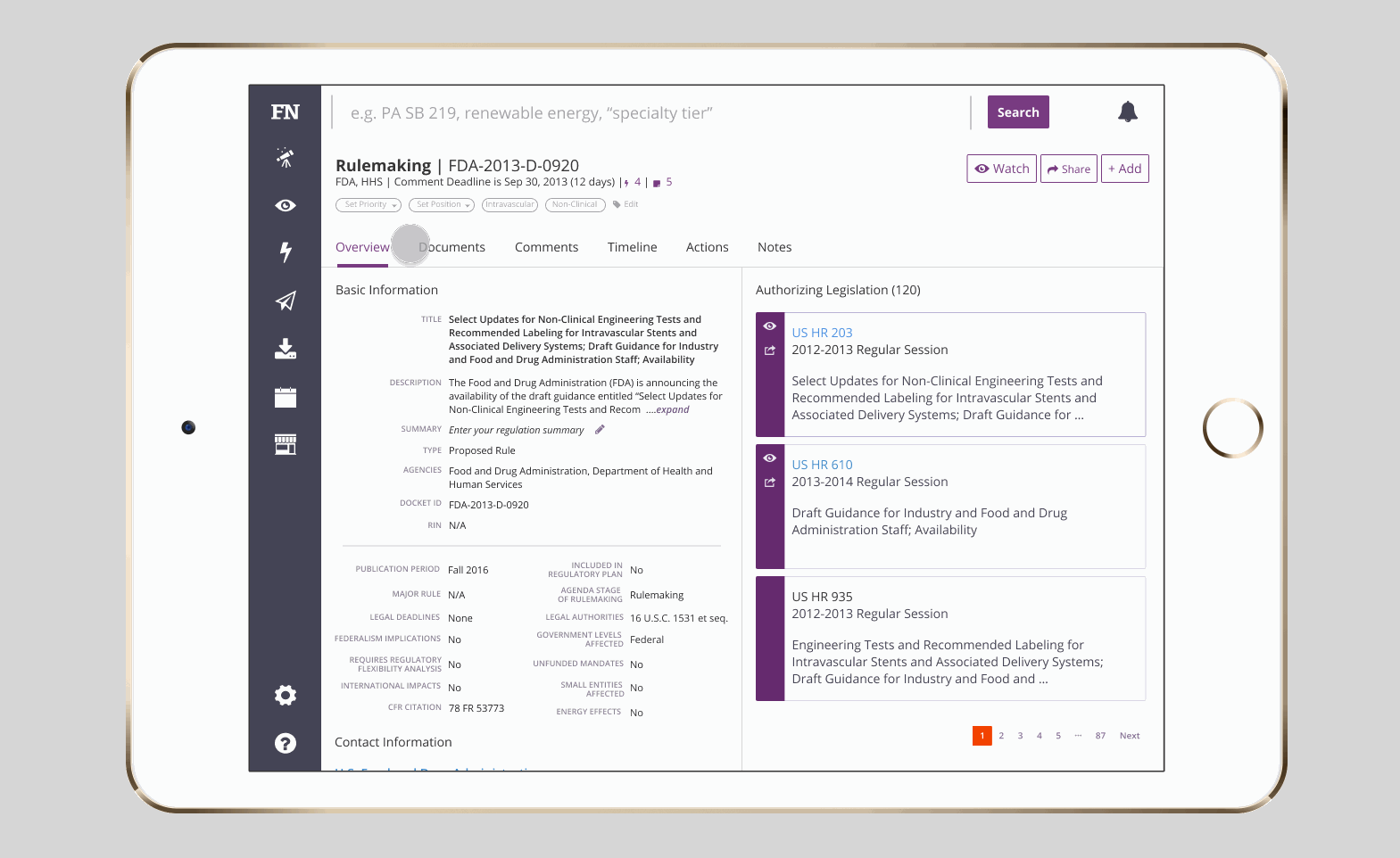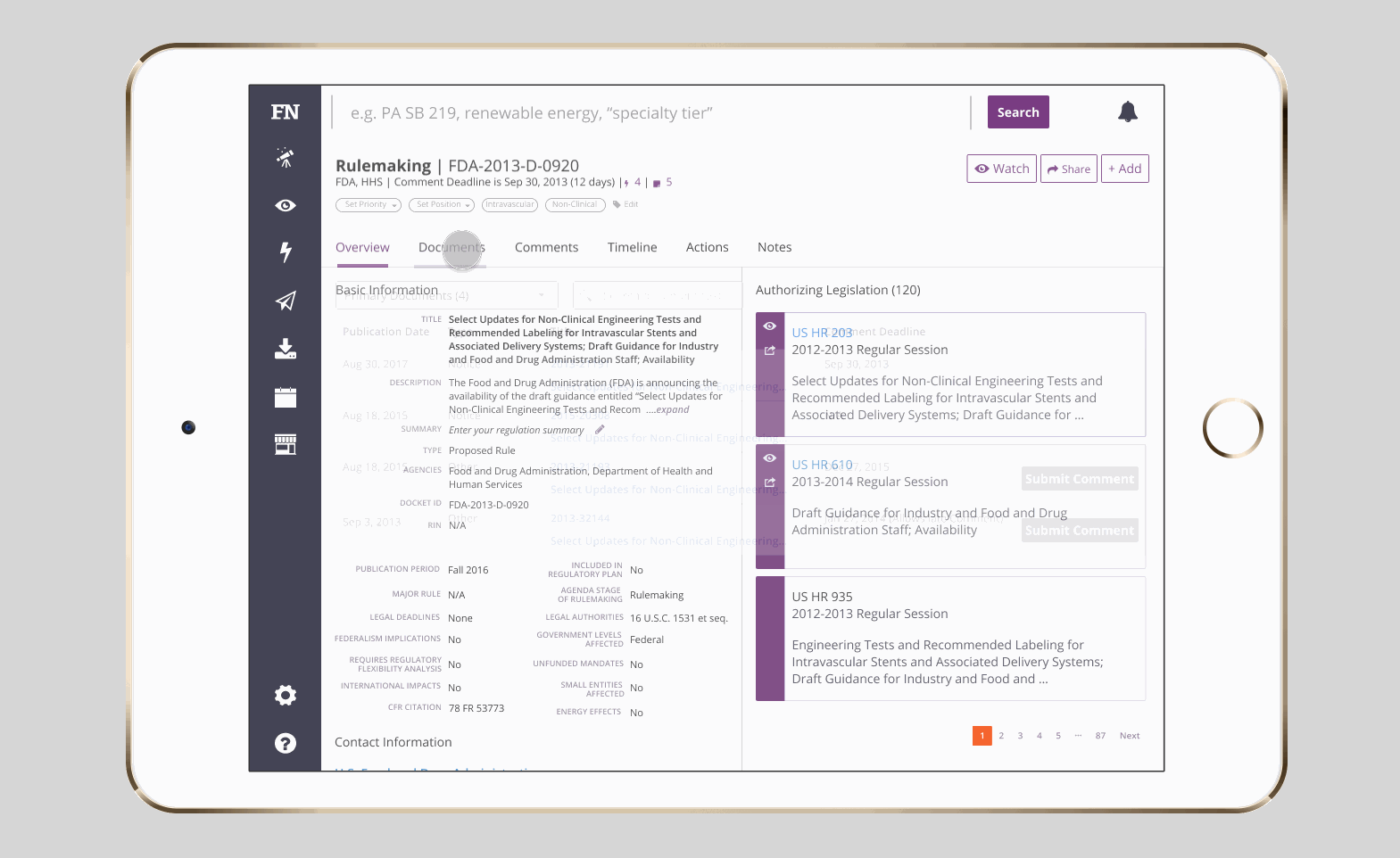1 min read
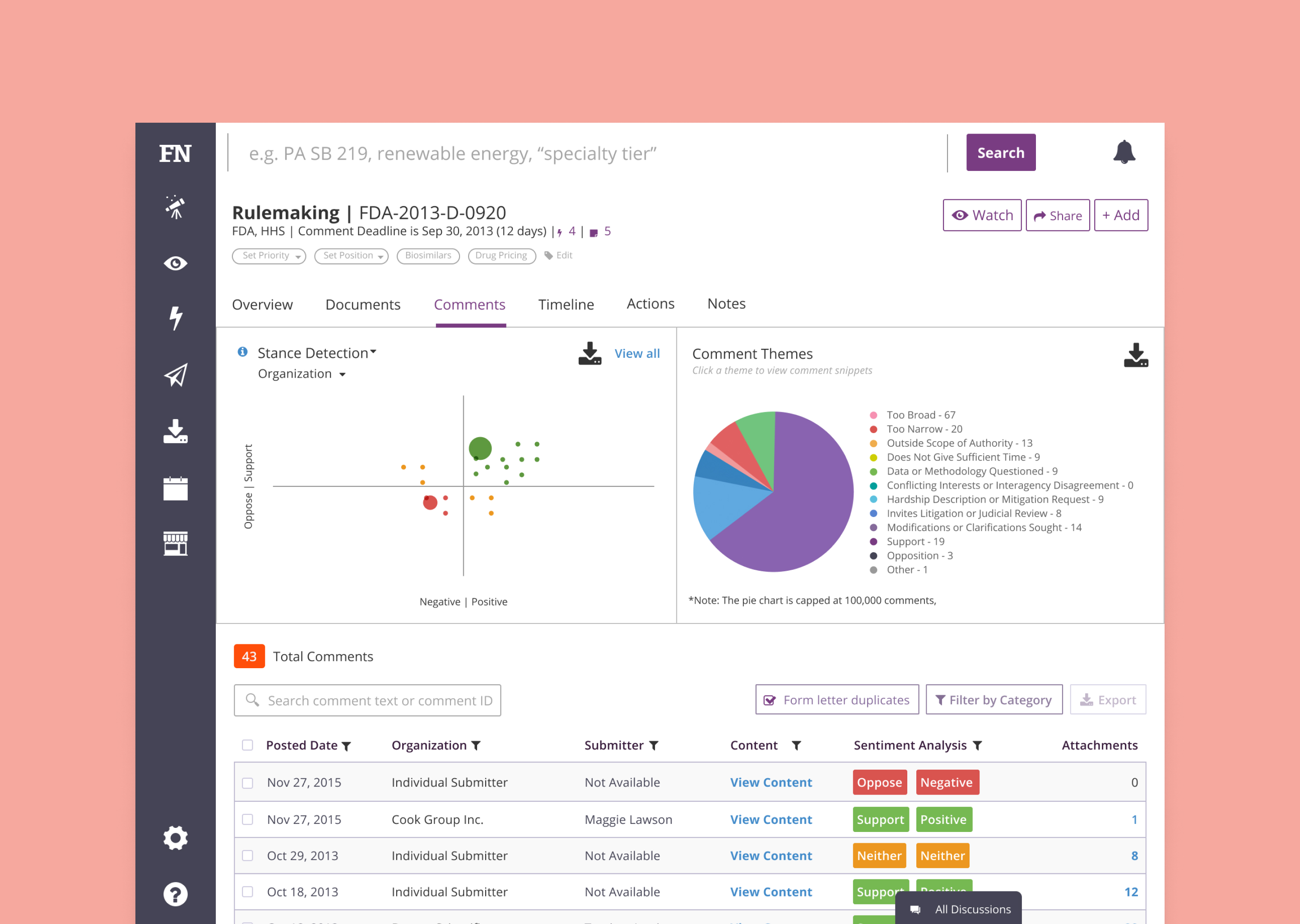
FiscalNote manages your political strategy to influence and impact legislators. I reformed workflows for regulators to surface comments and feel more effective.
As the lead designer, my role was to research and define the new experience. My team consisted of a product manager, front-end developer, data scientist, and an intern researcher.
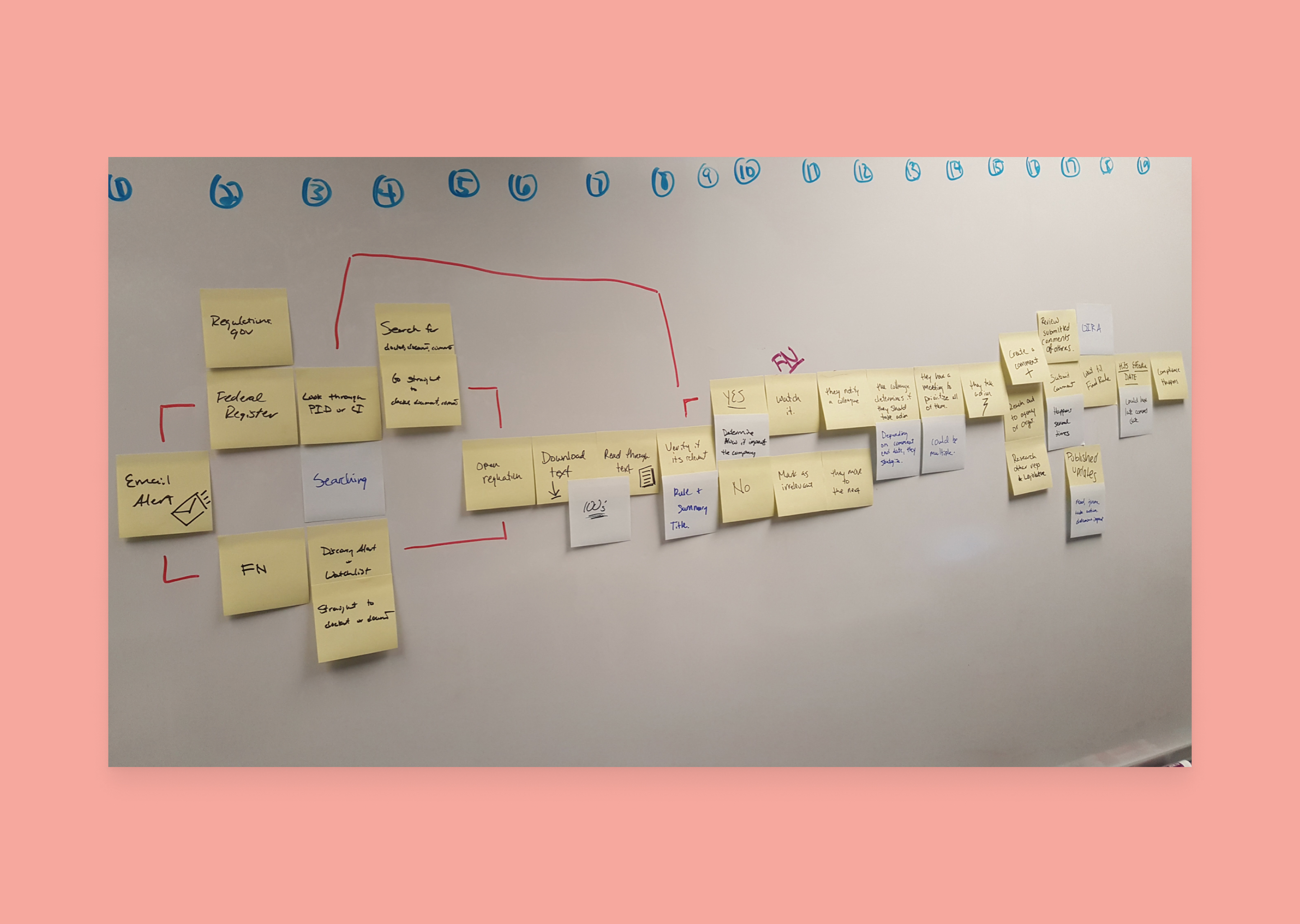
Our target audience revolved around regulatory affairs managers. Their motive is to stay proactive on matters and protect the company. The government will issue million-dollar fines if not done well. We found users find and save documents with bookmarks, then download and print it. They read it when traveling.
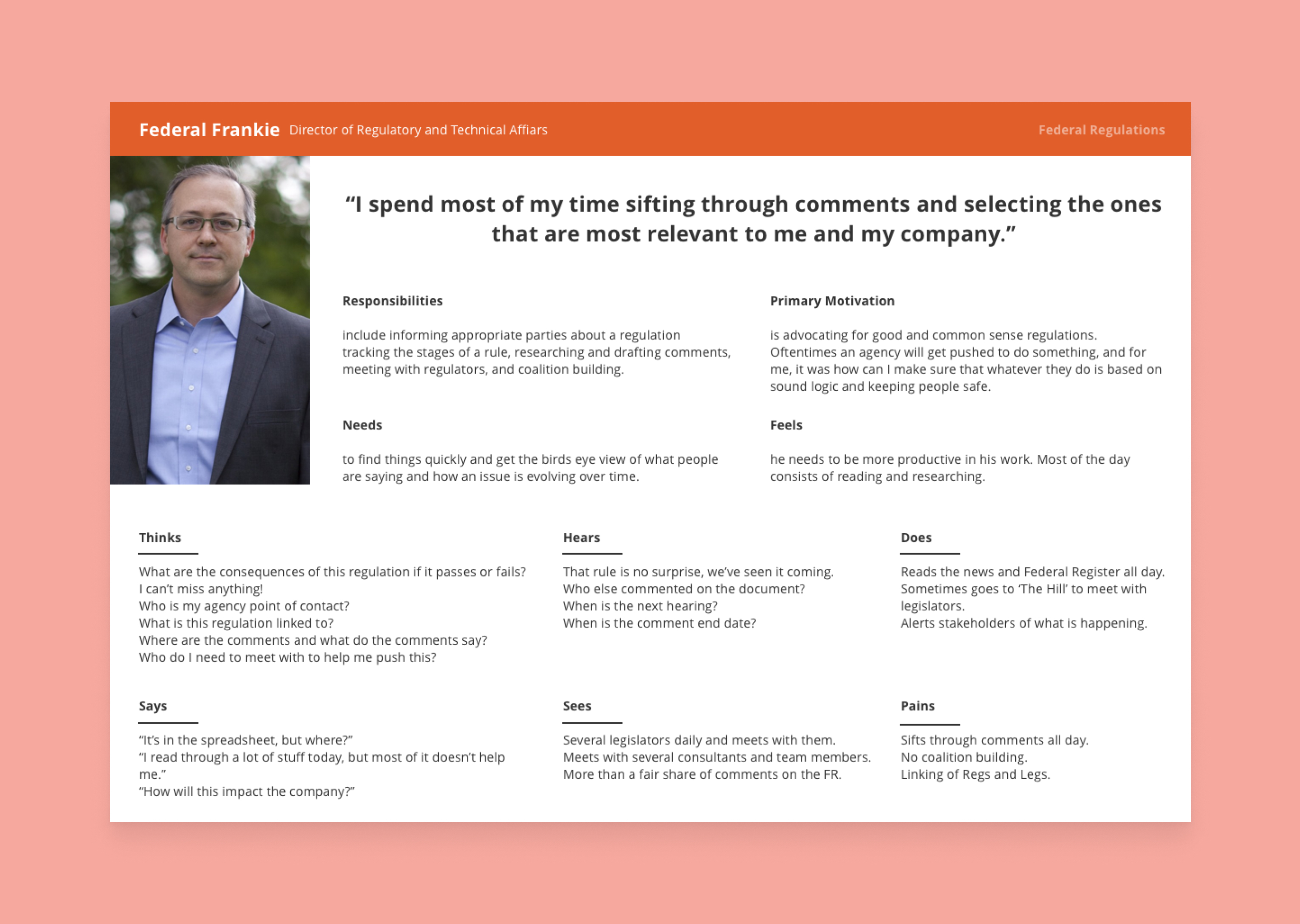
The main problem was easing the fear of missing out on policy information to lessen fines. Staying on top of any issue, and being proactive is key to building their strategy. To ensure the success of the product, I created metrics that the team would follow.
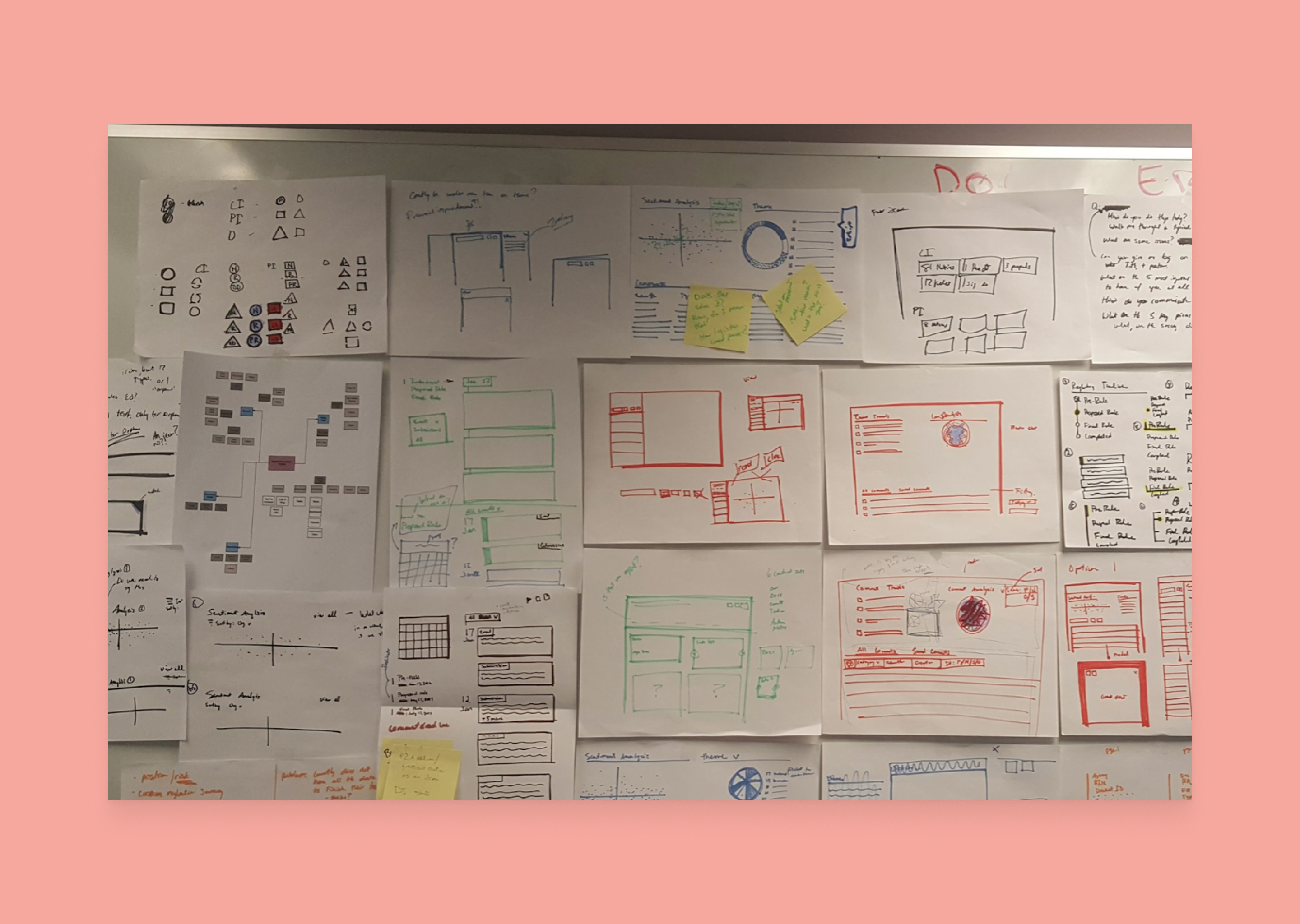
We redesigned two components — the comment themes and document viewer experiences.
Comment Themes are groupings of public comments based on the language in the text. Comments sorted and searchable by text help lobbyists build coalitions and networks.
The document viewer displays documents and comments within the platform—the viewer displays and searches for language to share information with their managers.
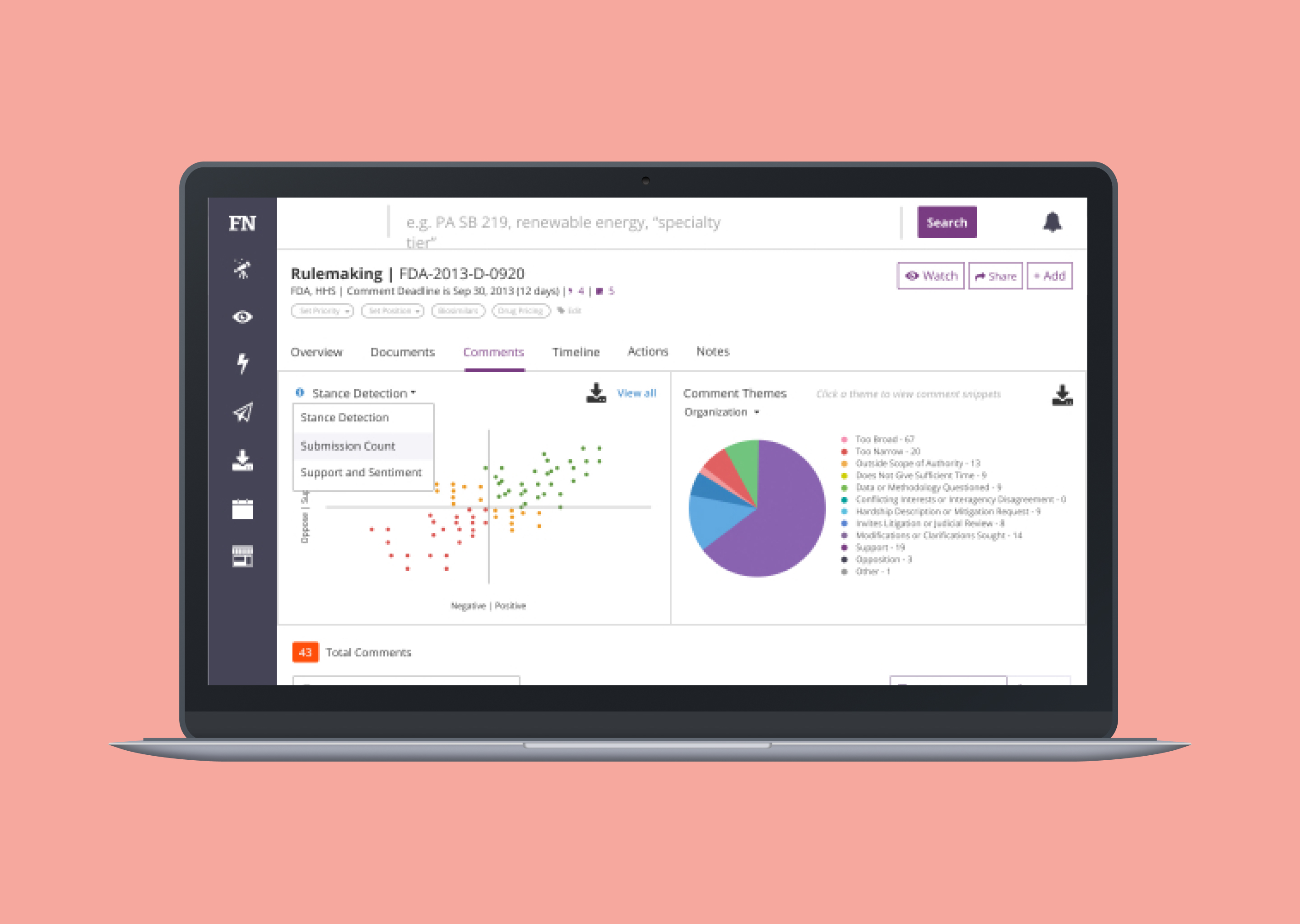
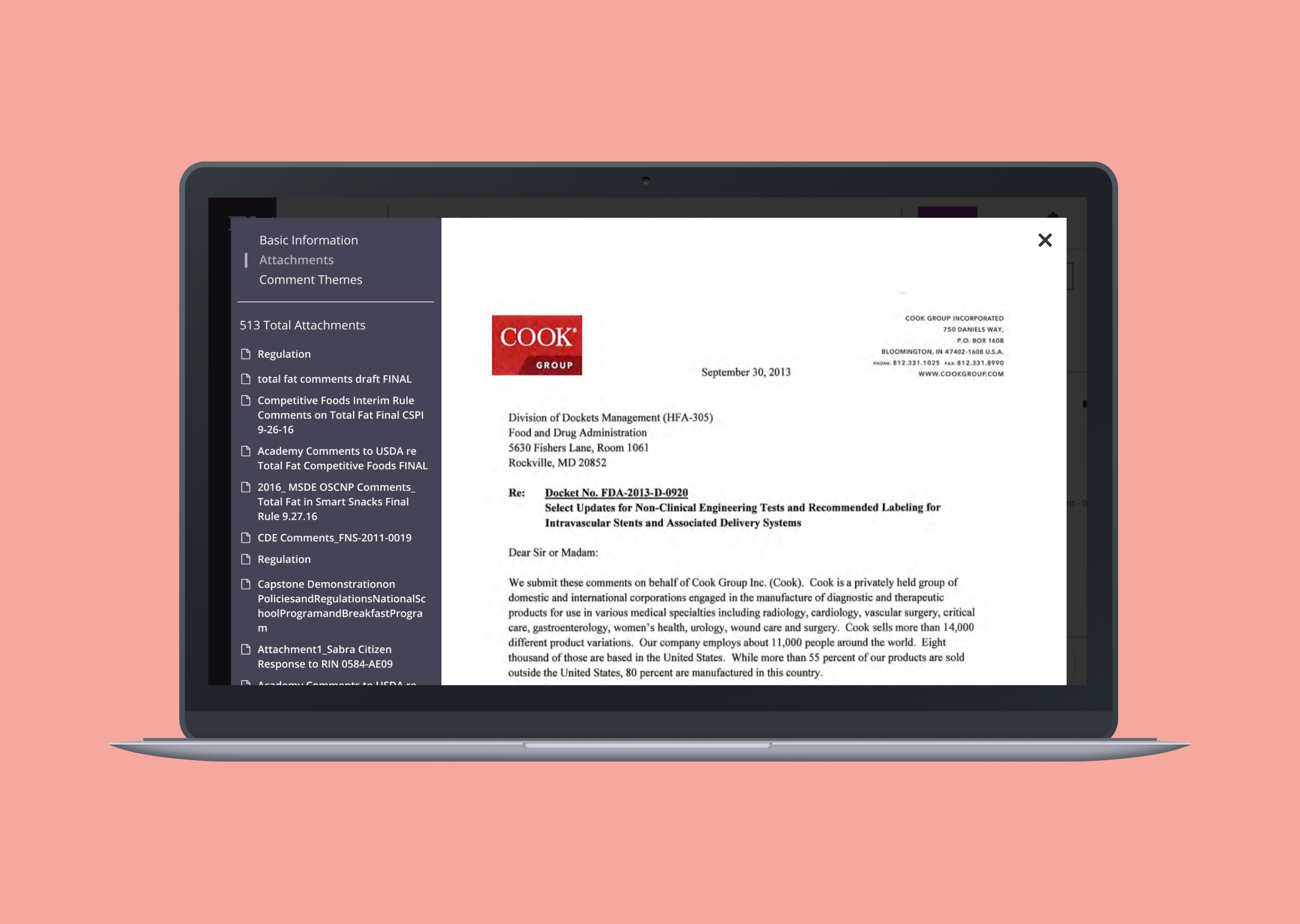
To prove our assumptions, we measured the comment themes, document viewer, and ease of use.
